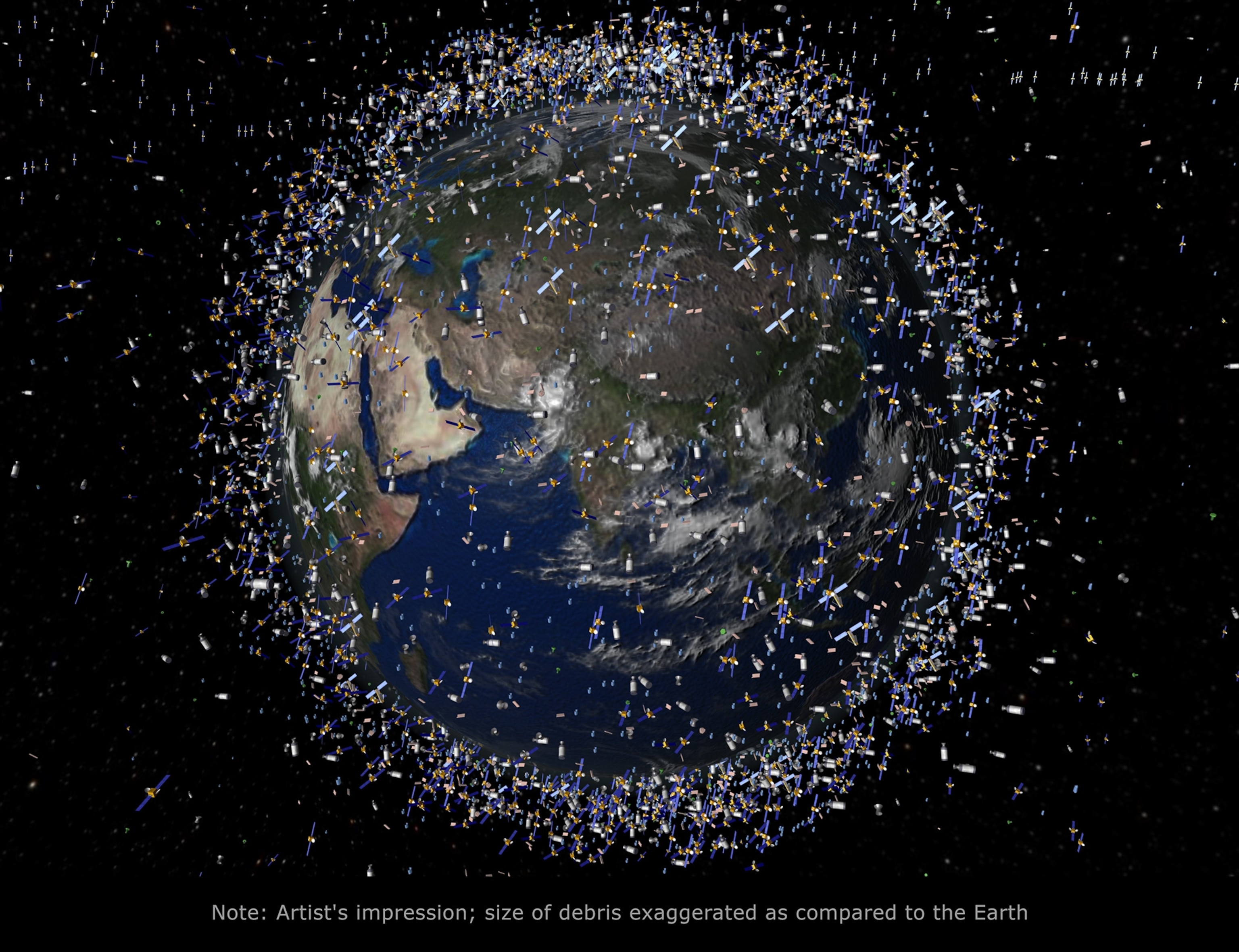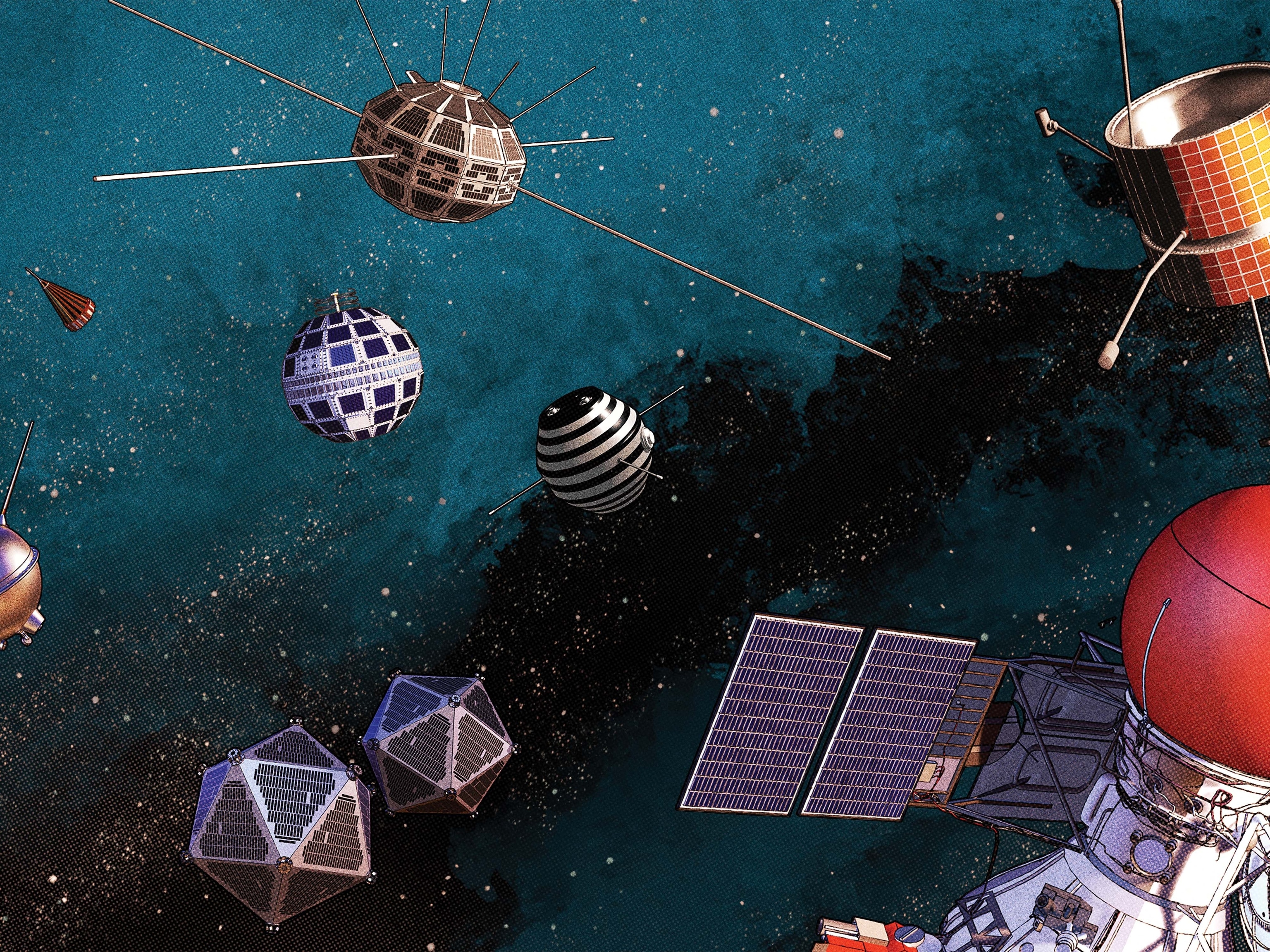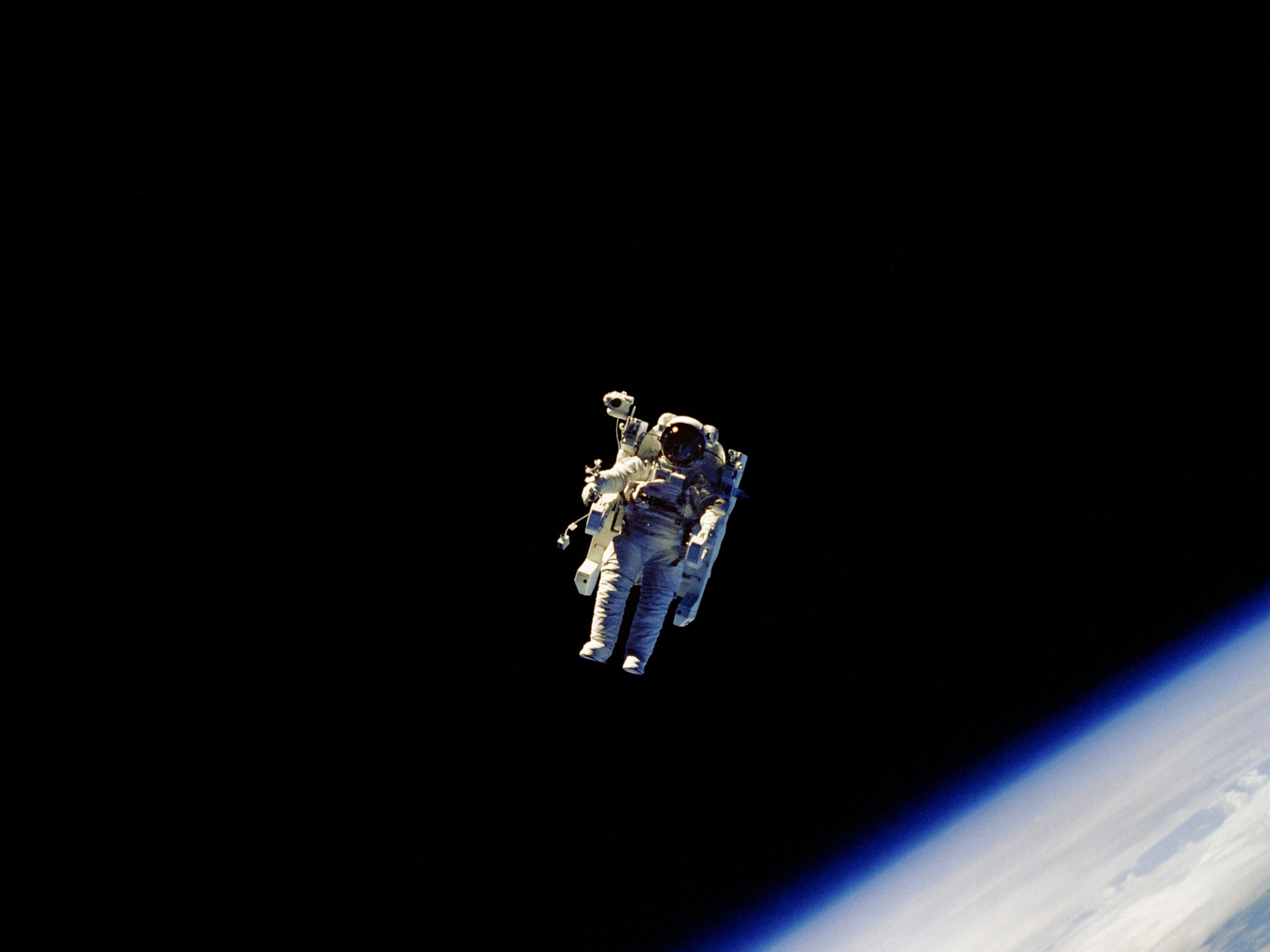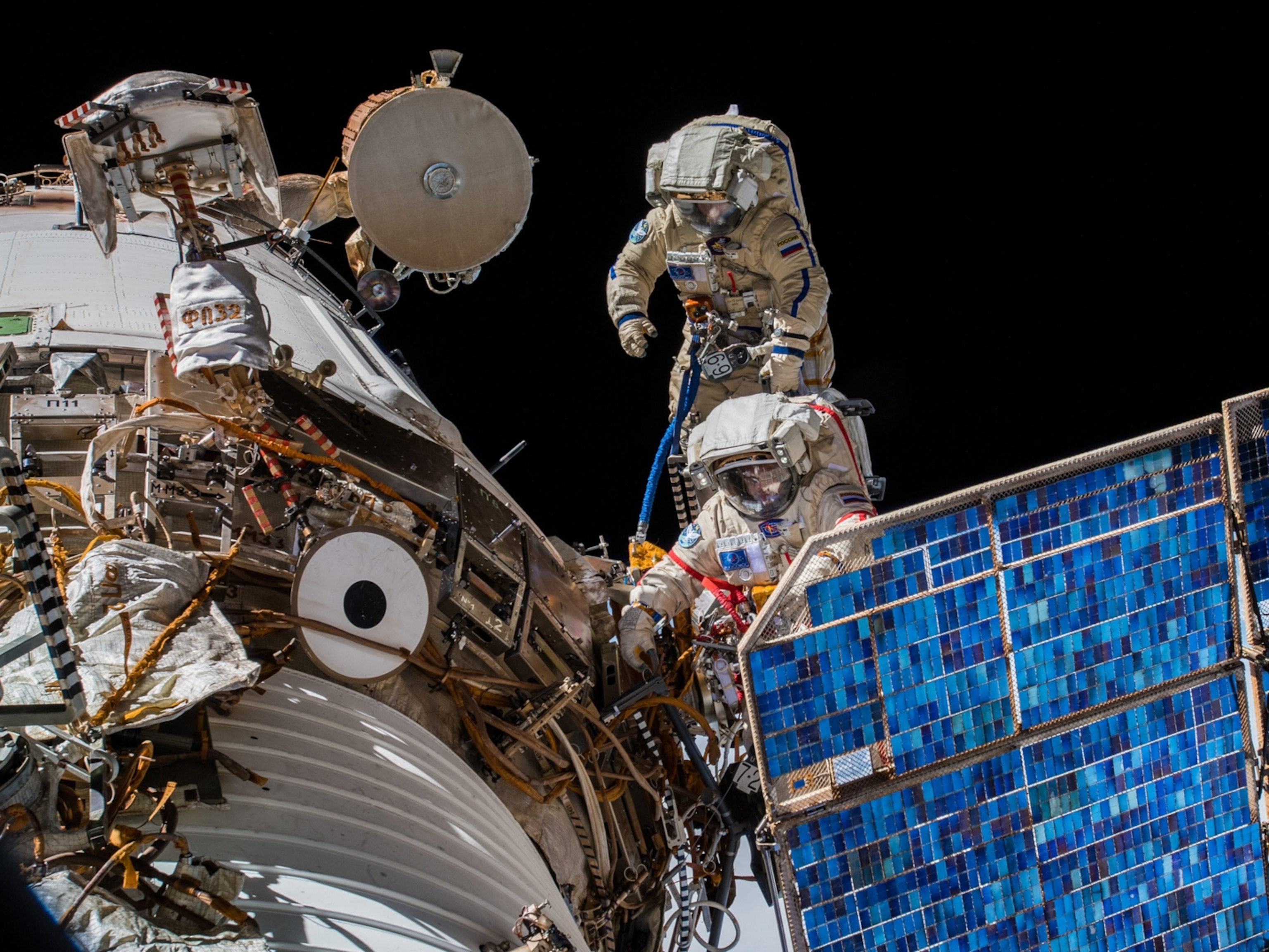In 2009, nearly 500 miles above Siberia, two satellites collided at some 22,300 mph, bursting into a cloud of thousands of pieces of debris. The culprits of this high-speed accident were the inactive Russian satellite Cosmos 2251 and the active U.S.-based communication satellite Iridium 33. Their catastrophic end was the first known time that two satellites collided in space, and a startling reminder of the growing problem of space junk.
More than 23,000 known man-made fragments larger than about 4 inches, which is a little wider than two golf balls across, zip around our planet. But those are just the pieces large enough to track. An estimated 500,000 pieces between 0.4 inches and 4 inches across join those larger fragments.
Most of that debris sits within 1,250 miles of Earth's surface in what is known as low Earth orbit, home to lots of satellites, such as NASA’s Earth Observing System fleet and the International Space Station. And while space is big—so even 23,000 fragments tend to be far from each other—even the tiniest bits of man-made flotsam can be problematic for active earth orbiters because of their breakneck speeds.
Space junk can impact other objects at over 22,300 mph, faster than a speeding bullet. Collisions with those tiny pieces often leave pits and dings in the many satellites, telescopes, and other objects orbiting our planet. In 2006, for example, a tiny piece of space junk collided with the International Space Station, taking a chip out of the heavily reinforced window.
What is all this trash?
Space junk has been amassing since the first human-made satellite, Sputnik 1, escaped Earth's gravitational pull on October 4, 1957. The momentous event heralded the start of the Space Age as humans began to explore ever further away from our home world, a feat that has been repeated in more than 4,700 launches around the globe. But that also means we've left our mark on space in the form of trash.
The junk includes the stages from rockets that jettison satellites into orbit and the satellites themselves once they die. But it also includes smaller bits and pieces lost to space including paint chips that flake away from the outsides of devices, nuts and bolts, garbage bags, a lens cap, screwdriver, and even a spatula.
But the number has increased sharply in recent decades thanks to both the 2009 satellite collision and China's 2007 destruction of the Fengyun-1C weather satellite during an anti-satellite missile test. On March 27, 2019, India announced it also successfully completed an anti-satellite missile test, creating a new cloud of at least 400 pieces of debris, which increased the risk of impacts to the ISS by an estimated 44 percent over a 10-day period. (The ISS can be maneuvered away if it's in danger.)
There are a few positives, however, for that particular cloud of space junk. Unlike China's high-altitude test in 2007, India's missile is thought to have targeted a low-altitude satellite, Microsat-R, which means most of this debris is expected to re-enter Earth's atmosphere over time. Even so, in a town hall following the event, NASA Administrator Jim Bridenstine called the debris cloud's creation “unacceptable” and added that "when one country does it, then other countries feel like they have to do it as well.”
As the skies become increasingly crowded with scientific and commercial orbiters, all nations need to pitch in to quell the growing problem.
How do we know what's up there?
The United States Department of Defense monitors the debris with the Space Surveillance Network. The group is tasked with detecting, tracking, and cataloging the many human-made items swirling around the planet using a global network of telescopes.
Objects about 4 inches across and larger are cataloged and routinely tracked. Objects as small as 0.12 inches can be identified by ground-based radars, allowing scientists to estimate the population with statistics. Estimates for even smaller material come from examination of the divots and pits on returning spacecraft that operated in low altitudes.
Can we stop launching things to space?
While some of the junk will lose altitude over time and burn up in Earth's atmosphere, there's a lot of stuff up there. Even without new launches or major explosions, the space junk already in low Earth orbit is so abundant that it will likely continue to multiply over the centuries as orbiting pieces collide.
Computer simulations of the next 200 years suggest that during that time debris larger than about 8 inches across will increase by 1.5 times. But the smaller particles will increase even more. Junk between 4 inches and 8 inches is expected to multiply 3.2 times and debris less than 4 inches will grow by a factor of 13 to 20. One review of the state of space junk published in Science notes: “In reality, the situation will undoubtedly be worse because spacecraft and their orbital stages will continue to be launched.”
We've become increasingly reliant on the growing constellation of satellites up above. Not only are they invaluable for science but we use them for communication, navigation, weather forecasting, and more. So rather than halting future launches, researchers have been investigating an array of methods to both remove and reduce the space junk.
What is being done?
The cadre of concepts in development to control space junk often sound more like science fiction than reality. JAXA, Japan's space agency, is testing an electronic space whip that stretches six football fields long, known as the electrodynamic tether (EDT). The electrified line, nearly 2,300 feet long, is capped with a 44-pound weight. When deployed, it's intended to knock debris out of orbit, sending it to burn up in Earth's atmosphere.
And that is far from the only option. Other proposals include giant magnets, harpoons, and nets to safely whittle down the growing debris cloud. Many nations are tackling the problem from the other side of the equation, ensuring that any future man-made orbiters sent to soar above Earth's surface have an appropriate end-of-life plan to limit the growing cloud of debris that envelops our home planet.
NASA Orbital Debris Program FAQ
Catalog of Earth Satellite Orbits
NASA presentation: Growth of orbital debris
U.S. Space Surveillance Program
Lost in space: Eight weird pieces of space junk
Science: Risks in space from orbiting debris
Acta Astronautica: Space traffic hazards from orbital debris mitigation strategies
Iridium 33/Cosmos 2251 Collision
NASA visible Earth: Space debris









